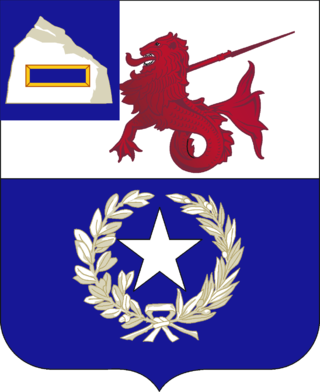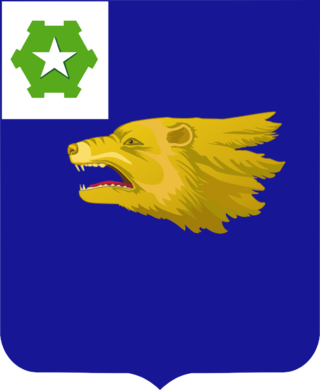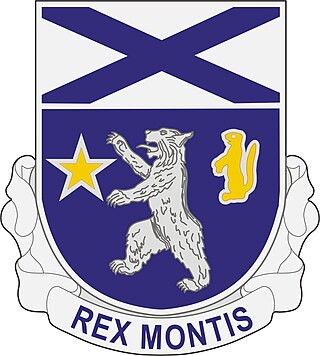
In heraldry, variations of the field are any of a number of ways that a field may be covered with a pattern, rather than a flat tincture or a simple division of the field.

In heraldry, an ordinary is one of the two main types of charges, beside the mobile charges. An ordinary is a simple geometrical figure, bounded by straight lines and running from side to side or top to bottom of the shield. There are also some geometric charges known as subordinaries, which have been given lesser status by some heraldic writers, though most have been in use as long as the traditional ordinaries. Diminutives of ordinaries and some subordinaries are charges of the same shape, though thinner. Most of the ordinaries are theoretically said to occupy one-third of the shield; but this is rarely observed in practice, except when the ordinary is the only charge.

In heraldry and heraldic vexillology, a blazon is a formal description of a coat of arms, flag or similar emblem, from which the reader can reconstruct the appropriate image. The verb to blazon means to create such a description. The visual depiction of a coat of arms or flag has traditionally had considerable latitude in design, but a verbal blazon specifies the essentially distinctive elements. A coat of arms or flag is therefore primarily defined not by a picture but rather by the wording of its blazon. Blazon is also the specialized language in which a blazon is written, and, as a verb, the act of writing such a description. Blazonry is the art, craft or practice of creating a blazon. The language employed in blazonry has its own vocabulary, grammar and syntax, which becomes essential for comprehension when blazoning a complex coat of arms.

The 57th Infantry Regiment was a unit in the Philippine Scouts. During their combat in Bataan members received 1 Medal of Honor, 21 Distinguished Service Crosses and 68 Silver Stars.
The 45th Infantry Regiment was a unit of the Philippine Scouts in the Philippine Division.
The 46th Infantry Regiment is a unit in the United States Army that served in World War II and Vietnam. The 1st Battalion, 46th Infantry Regiment currently conducts Infantry One Station Unit Training under the 197th Infantry Brigade.

The 50th Infantry Regiment is a United States Army infantry regiment.

The 61st Infantry Regiment is an infantry regiment of the United States Army traditionally associated with the 5th Infantry Division.

The 156th Infantry Regiment is an infantry regiment in the United States Army and the Louisiana National Guard. It began as a Confederate Army unit in 1861, and surrendered to the Union at the Battle of Appomattox Court House in 1865. It was reformed in 1878 as a militia unit, and reorganized into the Louisiana National Guard in 1899. It saw support service in World War I. In world War II it served as a guard battalion in Europe, for which it added a lion to its coat of arms to symbolize its service in northern France. It deployed twice during the Iraq war.

The 48th Infantry Regiment is an infantry regiment in the United States Army first formed in 1917.

The 18th Field Artillery Regiment is a field artillery regiment of the United States Army first formed in 1916.

The 81st Field Artillery Regiment is a field artillery regiment of the United States Army.

The 88th Infantry Regiment was an infantry regiment of the United States Army. It was created as the 88th Airborne Infantry Battalion on 10 October 1941 during World War II as the U.S. Army's first glider infantry unit.

The 40th Infantry Regiment is an inactive infantry regiment in the United States Army.

The 69th Infantry Regiment was twice a Regular Army Infantry Branch regiment that never saw combat.
The 213th Air Defense Artillery is a regiment in the Pennsylvania Army National Guard.

The 276th Engineer Battalion is an engineer battalion of the Virginia Army National Guard. Headquartered in Petersburg, Virginia, it is one of several Army National Guard units with campaign credit for the War of 1812.

The 135th Infantry Regiment is an infantry regiment in the Minnesota Army National Guard.

The 136th Infantry Regiment is an infantry regiment in the Army National Guard.
The 114th Infantry Regiment is an Infantry regiment of the New Jersey Army National Guard.















